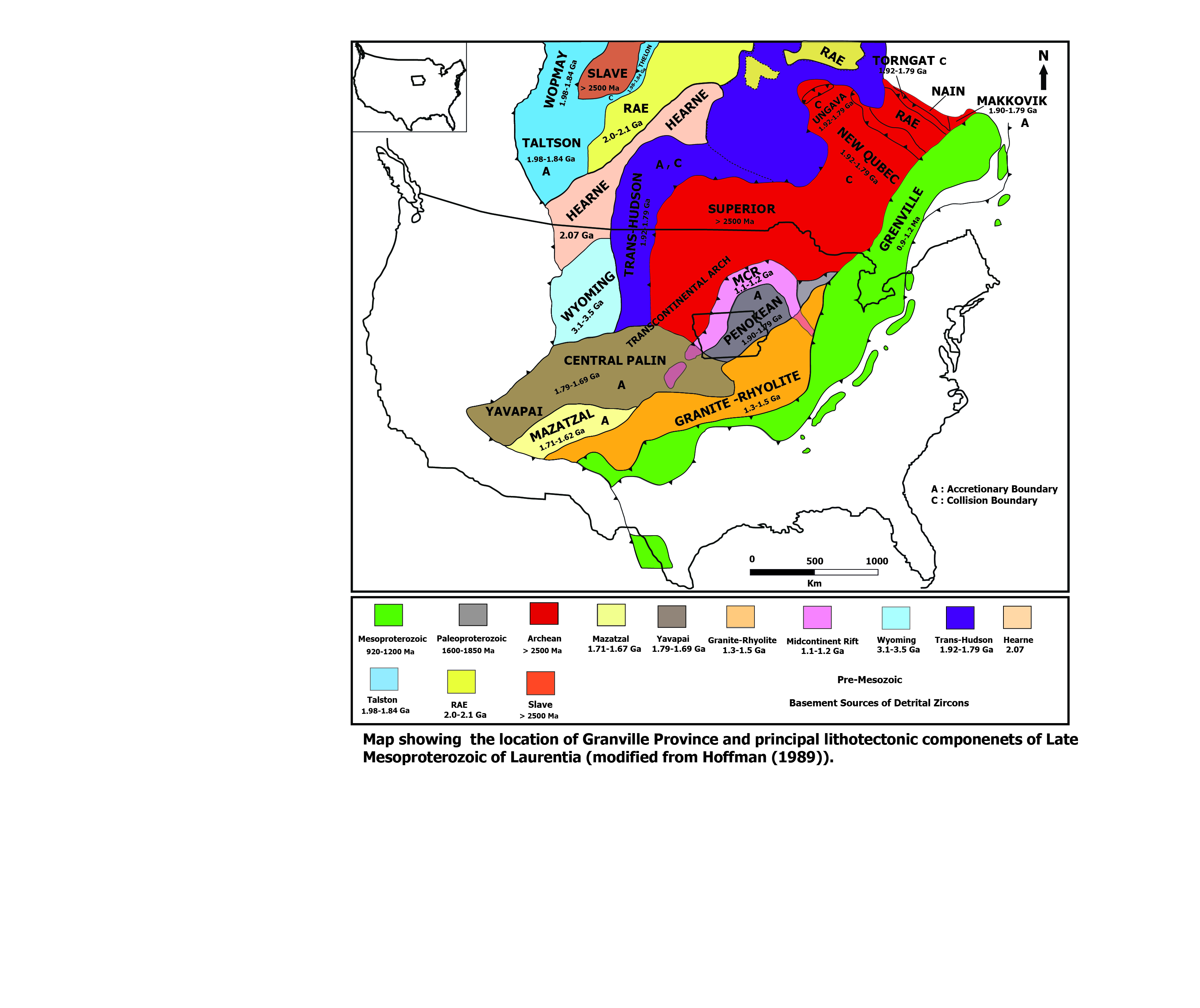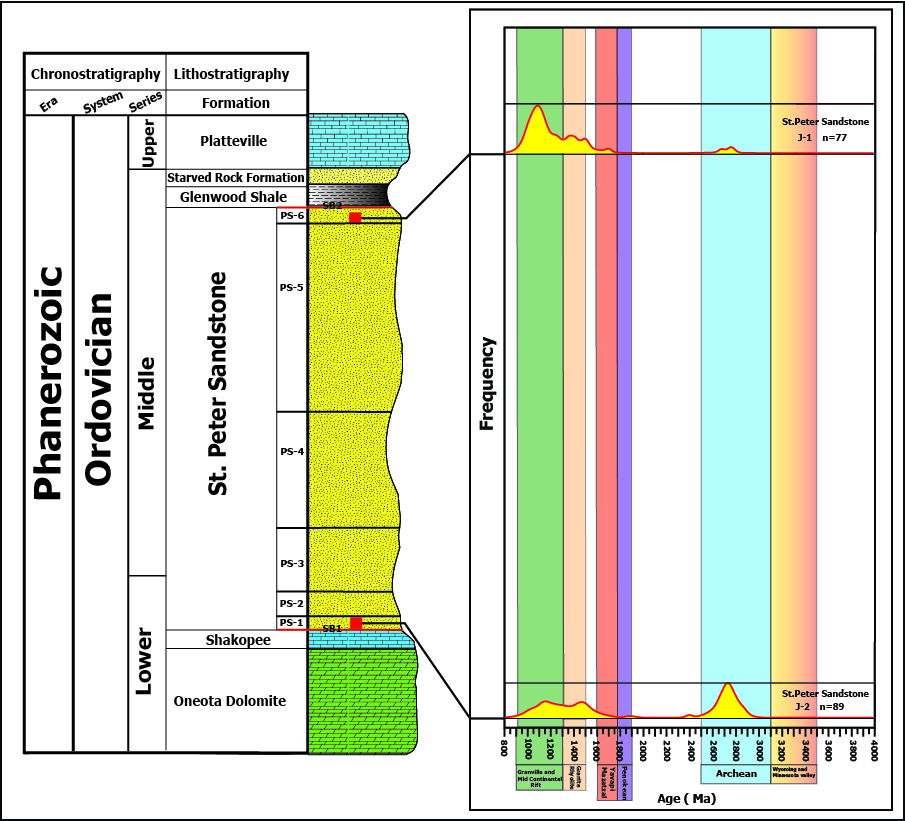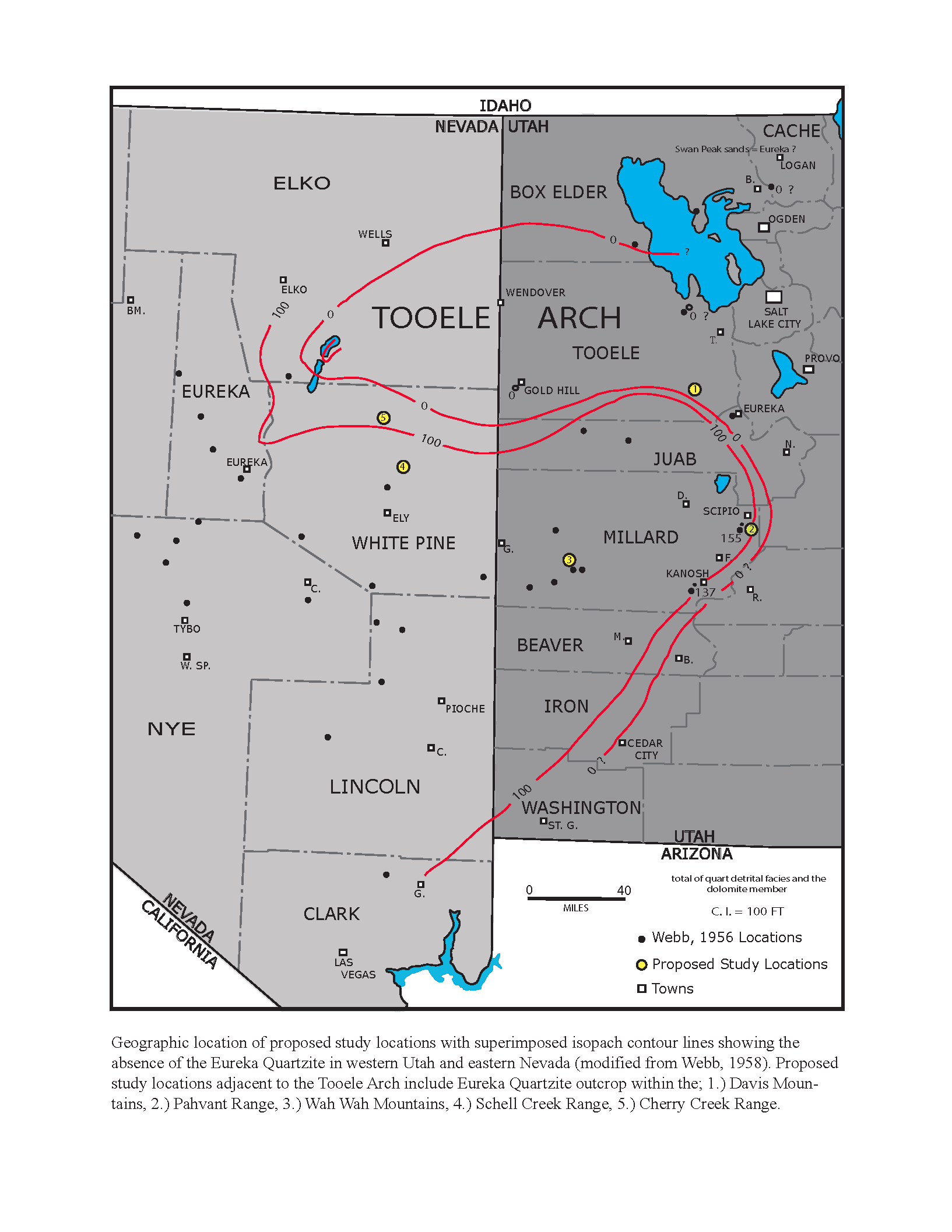Reports: ND851156-ND8: Sequence Stratigraphy, Detrital Zircon Geochronology, and Shale Geochemistry of Middle to Late Ordovician Quartzites in North America to Understand Provenance, Sediment Dispersal and Paleoclimate
Michael C. Pope, Ph.D., Texas A&M University
Diar Ibrahim presented preliminary results of his research at the AAPG/SEG Meeting at University of Oklahoma, Norman and the AAPG Sectional Meeting in Wyoming. Mario Lira presented preliminary results of his research at the National AAPG Meeting in Houston.
The main results of the research supported by this grant are:
1) detrital zircons for Middle-Late Ordovician quartz arenites of the western U.S. are remarkably similar indicating a uniform provenance from the Transcontinental Arch, mostly from the Trans-Hudson Orogen (1.8-1.9 Ga) and Archean terranes (2.5-2.9 Ga) such as the Wyoming Province. Almost all samples also include populations of 2.1 Ga zircons, and 0.8 – 1.2 Ga grains. The source for the 2.1 Ga grains is thought to be arc material associated with the Trans-Hudson Orogen, and the young zircons are derived from recycling Neoproterozoic-Cambrian quartz arenites.
2) detrital zircons for the Middle-Late Ordovician quartz arenites of the U.S. Midcontinent are quite dissimilar from the samples on the western side of the Transcontinental Arch containing major populations of 0.9-1.2 Ga, 1.4-1.5 Ga, 1.6-1.7 Ga, 1.8-1.9 Ga, and 2.4-2.8 Ga detrital zircon grains. The amount of Grenville age zircons, and zircons from 1.6-1.7 Ga (Yavapai-Matzatzal) source terranes are much larger than in the western US samples.
3) Changes in detrital zircon populations between the base and top of a unit (see TOC) indicates long-term sea level fluctuations controlled the source(s) of sediment for these units by burying or exposing the basement rocks along the Transcontinental Arch available for erosion and subsequent deposition.
4) There appears to be little recycling of pre-existing siliciclastic units during deposition of the Middle-Late Ordovician quartz arenites.
This grant has allowed me to follow an entirely new line of research, detrital zircon geochronology, and it has led to numerous collaborations at Texas A&M between Dr. Brent Miller, Dr. Tom Yancey, and me. The grant has allowed for a collaborative effort between Bill McClelland, Brian Witzke, and me. This grant has provided Research Assistantships for Mike Pickell and Mario Lira and provided the bulk of the funding for the analyses for Mike Pickell, Mario Lira, and Diar Ibrahim's theses. This research has taught these students quantitative techniques and how to integrate these into fundamental stratigraphic correlation to solve problems. These skills should provide all three of them with a good background for successful careers in the petroleum industry.
















